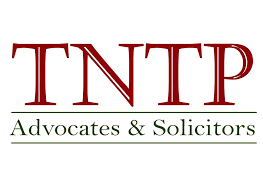In our capital and financial activities, “credit risk” is known as a common term, especially for bank credit. However, having an understanding of credit risk is not a common skill that everyone may get. So what is credit risk? Why does credit risk take place? Let’s find out about this in the below article.
1. Definition
Credit operations are activities that take place at all banks. This activity has a strong impact on the liquidity of capital. This circulation will create revenue for banks and avoid the state of “standing still” of the cash flow.
However, not all trading activities bring about income without risks. All transaction activities contain various risks, which may have a negative impact on the banks. These potential risks are collectively known as credit risk.
Credit risk can be understood as a deficit and loss in terms of finance and capital source, causing difficulties and malfunctions in the bank’s transaction activities. Specifically, a possible problem is that customers cannot pay the principal and interest borrowed from the bank or the amount to be paid monthly for a certain purpose in due course.
2. Characteristics
Credit risk includes four main characteristics as follows:
Firstly, credit risk has a huge impact causing serious losses to the bank. Furthermore, if credit risk is not effectively controlled, it can even affect the whole country’s economy and its development.
For example, in case a customer borrows money at a bank with a significant amount but cannot comply with the contract terms, this situation will likely cause the bank to fall into trouble. Therefore, to avoid the credit risk, banks will have to set out specific plans to prevent this situation from happening too often or too seriously.
Credit risk can occur in many different areas and fields in banking credit operations including guarantees, trade finance, securities, etc. In general, the larger the credit activities’ scale with a higher profit source is, the more risks it contains.
Risk management is the act of banks affecting and adjusting credit activities in order to prevent and minimize adverse effects on money sources. This act is performed via many different tools including review, managing tools as well as the personnel system in the bank.
3. Causes of credit risk
3.1 Objective causes
a) Factors of economic environment
Economic development cycle:
If credit activities are placed in an economic environment with stable growth, there will be certainly fewer risks than usual. On the contrary, if the economic environment is not in a stable and safe state, credit activities will inevitably face many problems and risks.
If these problems and risks are not resolved, they will lead to economic crises and recession. On the bank’s side, it can cause losses and bankruptcy.
Risks due to financial liberalization and international integration:
It can be seen that globalization is rapidly spreading around the world. This also leads to the risk of uncontrollable increase in bad debt. At this time, the economic environment is highly competitive and even becomes fierce.
Customers are also directly affected by this trend. As a result, they will face a higher risk of loss, accordingly, will be unable to make the payment to the bank.
At the same time, competition with international banks is also a huge obstacle for domestic banks. If the bank cannot withstand the wave of foreign banks’ intrusion, it may likely get eliminated.
b) Factors of legal environment
Many loopholes in the law enforcement:
The current legal system in Vietnam remains rather inconsistent with many pending problems, which increases the risk of credit risk to banks.
Using capital for wrong purposes, not in good faith in debt payment:
When submitting loan documents, customers have to present a clear purpose of use and prove on financial ability to repay the loan on time. However, many customers, after successfully taking out a loan, use it for the wrong purpose or even have no goodwill in repaying the loan, leading to financial risks for the banks.
Poor strategic planning management ability:
If a company’s business strategy is not well-planned, this will lead to a budget deficit and directly affect the debt repayment.
Weak financial situation with the lack of transparency:
Due to the competition matter, many banks neglect to review or verify the information in the loan documents thoroughly just for obtaining immediate sales. This leads to the fact that companies being not eligible or having low credit scores successfully borrow money from banks, accordingly, pose a potential risk of bad debts to banks in the future.
3.2 Subjective causes:
Risks from the bank’s credit policy.
Unclear credit policy makes credit activities misleading, leading to wrong credit granting, as well as creating loopholes for capital users to evade the law and ultimately, bring about possible losses for banks.
Due to weaknesses and omissions of credit officers
Incompetent credit officers with many shortcomings in the process of managing and controlling credit activities will also be the causes leading to the financing of inefficient projects, which poses a great risk to the bank.
Lack of supervision and post-lending management
Post-lending monitoring and management are essential and must be performed on a regular basis. This will help the credit officers to control and acknowledge the customer’s problems efficiently. Hence, they can detect potential risks and develop appropriate countermeasures.
Nowadays, due to the increasing competition between banks, it is rather uncommon for banks to cooperate to capture information about borrowers in a timely manner. Due to such lack of information exchange between banks, a customer with a low credit score at one bank may go to another one to borrow money, resulting in the risk being shared equally among all banks.
Above is a TNTP’s analysis of credit risk as well as its characteristics and causes. Hope this article is useful to you.
Sincerely,







